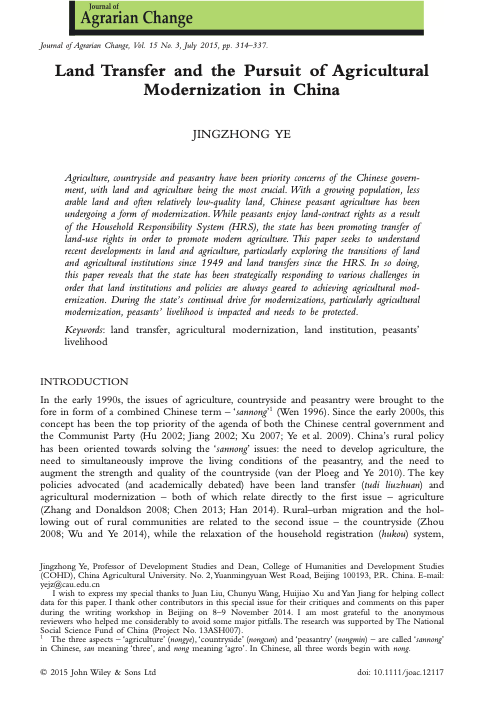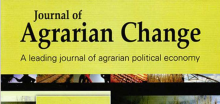Resource information
Agriculture, countryside and peasantry have been priority concerns of the Chinese govern- ment, with land and agriculture being the most crucial. With a growing population, less arable land and often relatively low-quality land, Chinese peasant agriculture has been undergoing a form of modernization.While peasants enjoy land-contract rights as a result of the Household Responsibility System (HRS), the state has been promoting transfer of land-use rights in order to promote modern agriculture. This paper seeks to understand recent developments in land and agriculture, particularly exploring the transitions of land and agricultural institutions since 1949 and land transfers since the HRS. In so doing, this paper reveals that the state has been strategically responding to various challenges in order that land institutions and policies are always geared to achieving agricultural modernization. During the state’s continual drive for modernizations, particularly agricultural modernization, peasants’ livelihood is impacted and needs to be protected.


